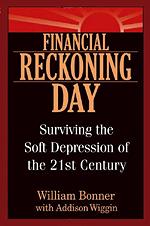A few months ago, your columnist invested some of his hard-earned money in a pile of stones in Normandy. He had a new business in mind, which allowed him to justify the purchase to his wife. But the truth was, he just couldn’t resist an old house in need of renovation. This is not the first pile he’s gotten involved in. Nor is it likely to be the last. Nor is it in any of the "hot" areas where he is likely to make any money. Nor is it the kind of real estate that is likely to go up in price. It is a vast, old house — built before the French Revolution — in a beautiful section of Normandy, too far from Paris to benefit from the general boom in urban prices.
He only brings it up to give new readers a demonstration of his shrewd investment wit and practical economic sense. They might as well know what they are getting into.
Well, the house proved a bigger problem than your editor expected. First, we discovered a type of fungus in the old woodwork, which — upon close examination — turned out to be eating up the entire interior of the place. Alas, the beams, rafters and floor joists needed to be pulled out and replaced with concrete. The fungus is so malicious, local law required that we burn every trace of the infected wood. Apparently, it can travel through the ground to attack other houses miles away!
 The next major setback was when our lawyer announced that the house was so large and so old it was not only considered an historic monument, but a public building. This was not a problem in itself, but it set off an avalanche of them. Public buildings are required to have elevators and ramps for the disabled. But historic buildings must not be altered.
The next major setback was when our lawyer announced that the house was so large and so old it was not only considered an historic monument, but a public building. This was not a problem in itself, but it set off an avalanche of them. Public buildings are required to have elevators and ramps for the disabled. But historic buildings must not be altered.
"You must put in an elevator," says the High Commission for Cripples and Half-wits (the title has been directly translated from French). "You may not put in an elevator," says the Satrap of Historical Correctness.
Bill Bonner [send him mail] is the author, with Addison Wiggin, of Financial Reckoning Day: Surviving the Soft Depression of The 21st Century.



